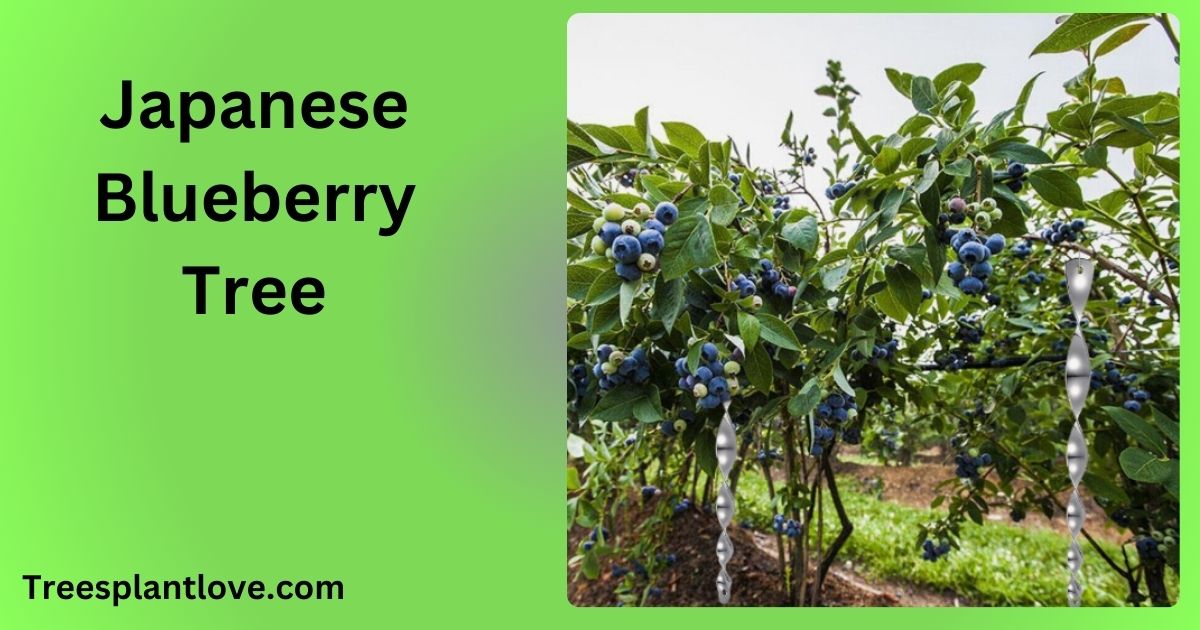
Japanese Blueberry Tree: A Stunning and Low-Maintenance Tree for Your Garden
Japanese Blueberry Tree: The Japanese Blueberry Tree, known scientifically as Elaeocarpus decipiens, is a stunning evergreen tree that brings both ornamental beauty and functional benefits to gardens and landscapes.
Native to East Asia, particularly Japan and Taiwan, this tree has gained popularity in gardens worldwide for its attractive foliage, vibrant fruit, and resilience to various environmental conditions. Whether you’re a seasoned gardener or a beginner looking to add a unique touch to your landscape, the Japanese Blueberry Tree offers a variety of compelling reasons to consider it for your outdoor space.
Appearance and Characteristics
The Japanese Blueberry Treeis a medium-sized evergreen that typically grows between 20 to 30 feet in height and width, making it an excellent choice for both small and large landscapes. The tree’s dense, glossy green leaves provide year-round color, making it an attractive choice for gardeners who want a low-maintenance yet eye-catching addition to their garden.
In the spring, the Japanese Blueberry Tree produces small, white to pale pink flowers, which are relatively inconspicuous but offer a subtle fragrance. These flowers eventually give way to clusters of dark blue to purple berries in late summer to early fall. While the berries are edible, they are often considered more ornamental than flavorful, with a somewhat astringent taste that is typically not consumed fresh.
However, the most striking feature of the Japanese Blueberry Tree is its rich, reddish-brown bark, which peels off in thin strips to reveal a smoother, lighter-colored trunk. This peeling bark adds a layer of texture and visual interest, particularly during the winter months when other trees may appear bare and lifeless.
Growing Conditions
The Japanese Blueberry Tree thrives in a variety of climates, from USDA hardiness zones 7 through 10. It is tolerant of both full sun and partial shade, although it will perform best in a location that receives at least four hours of sunlight per day. It prefers well-draining soil that is slightly acidic to neutral, and once established, it is relatively drought-tolerant, making it a great option for low-maintenance gardens.
In terms of water requirements, the tree does best when its soil is kept consistently moist, especially during the hotter months, but it should not be left sitting in waterlogged soil. Proper drainage is key to preventing root rot and ensuring healthy growth. The Japanese Blueberry Tree is also relatively pest-resistant and can withstand a variety of environmental conditions, including mild drought and coastal winds.
Benefits and Uses
- Ornamental Appeal: The Japanese Blueberry Tree’s dense foliage, attractive flowers, and colorful fruit make it an excellent choice for landscaping. It can be used as a specimen tree, a hedge, or even a privacy screen, especially in areas where you want to add both beauty and function.
- Wildlife-Friendly: The small berries produced by the tree attract various birds, including robins, mockingbirds, and cedar waxwings, who enjoy feasting on the fruit. This makes the Japanese Blueberry Tree an excellent addition to gardens looking to attract wildlife.
- Minimal Maintenance: Compared to many other trees, the Japanese Blueberry is relatively low-maintenance. Once established, it requires minimal care, including occasional pruning to maintain its shape. Its resistance to many common pests and diseases further reduces the need for intervention.
- Urban and Coastal Landscaping: This tree is ideal for urban environments and coastal regions due to its tolerance for salt and wind. It can be used in places where other trees might struggle to thrive, making it an excellent choice for city landscapes or coastal gardens.
- Privacy and Screening: Due to its dense, evergreen foliage, the Japanese Blueberry Tree is perfect for creating privacy screens or hedges. It’s particularly effective for adding seclusion around patios, backyards, or along property lines.
Care and Maintenance Tips
While the Japanese Blueberry Treeis relatively low-maintenance, a few key care practices will help it thrive:
- Watering: Regular watering is essential, especially during dry spells. Ensure the tree is watered deeply to encourage deep root growth, but avoid over-watering, as it can lead to root rot.
- Pruning: Light pruning may be necessary to maintain the tree’s shape and remove any dead or damaged branches. This is best done in late winter or early spring before new growth begins.
- Fertilization: While the Japanese Blueberry Tree is not particularly heavy-feeding, a balanced fertilizer applied in early spring can help promote healthy growth and vibrant foliage. Avoid over-fertilizing, as this can lead to excessive growth at the expense of flowering and fruiting.
- Mulching: Applying a layer of mulch around the base of the tree can help retain moisture, regulate soil temperature, and suppress weeds. Just be sure to keep the mulch away from the trunk to prevent rot.
Conclusion
The Japanese Blueberry Tree is a versatile, low-maintenance addition to any garden or landscape. With its glossy foliage, vibrant fruit, and peeling bark, it offers year-round visual appeal, while its tolerance for a variety of growing conditions makes it a great choice for gardeners of all levels.
Whether you’re looking to enhance your garden with a beautiful ornamental tree, attract wildlife, or create privacy and shade, the Japanese Blueberry Tree is an excellent choice to consider for your next planting project.
With the right care, this tree can thrive for many years, adding beauty and function to your outdoor space while requiring minimal effort on your part.

Leave a Reply